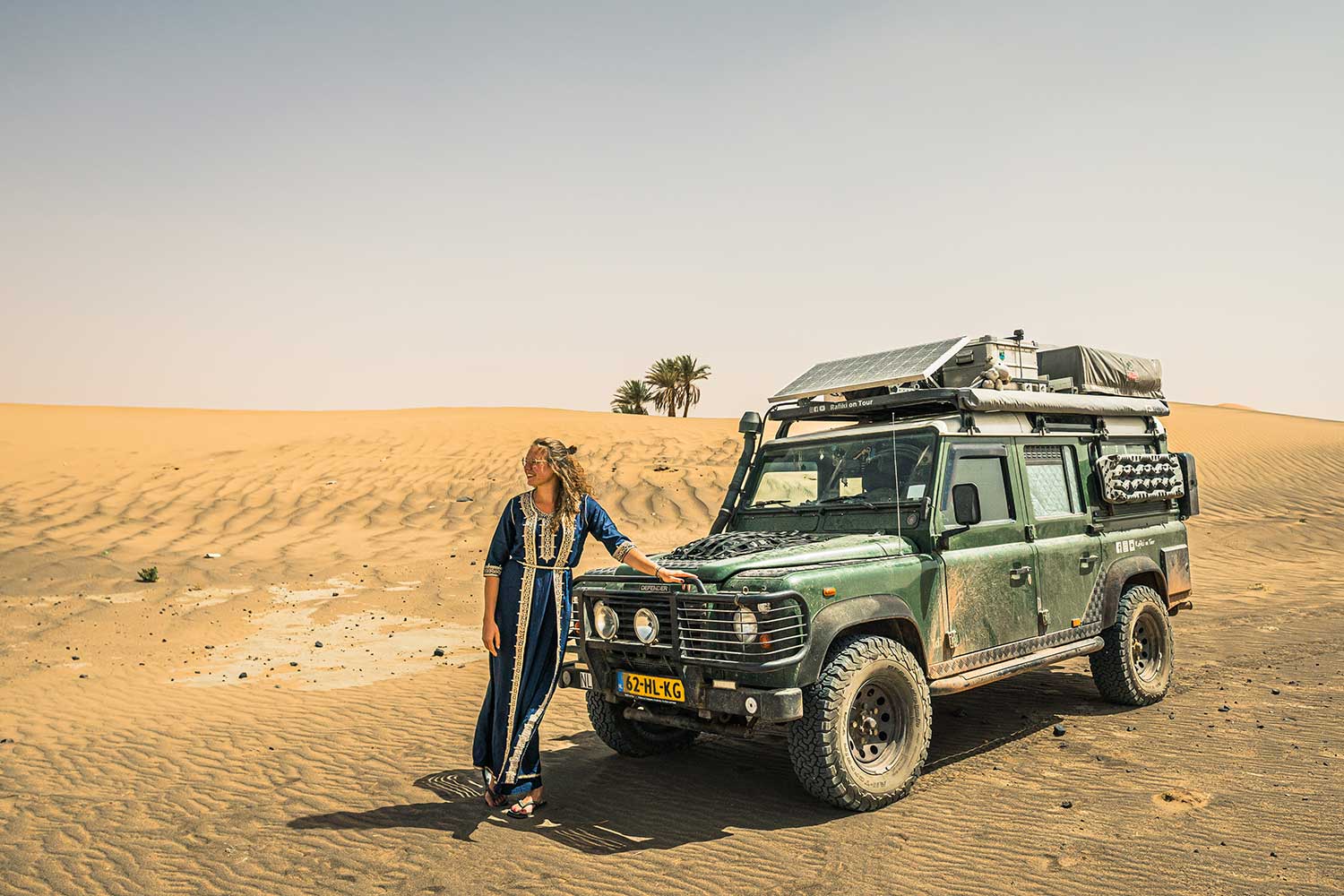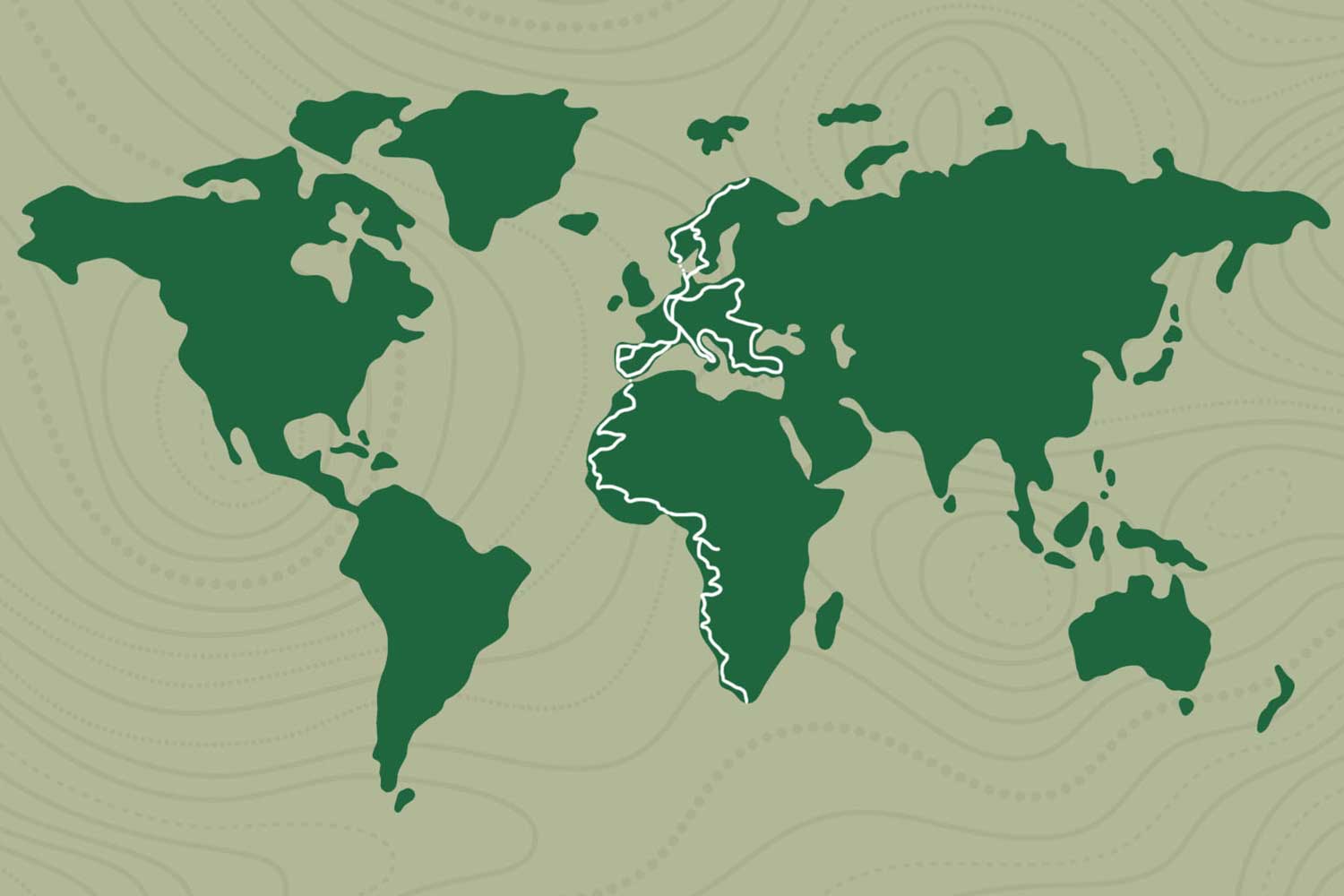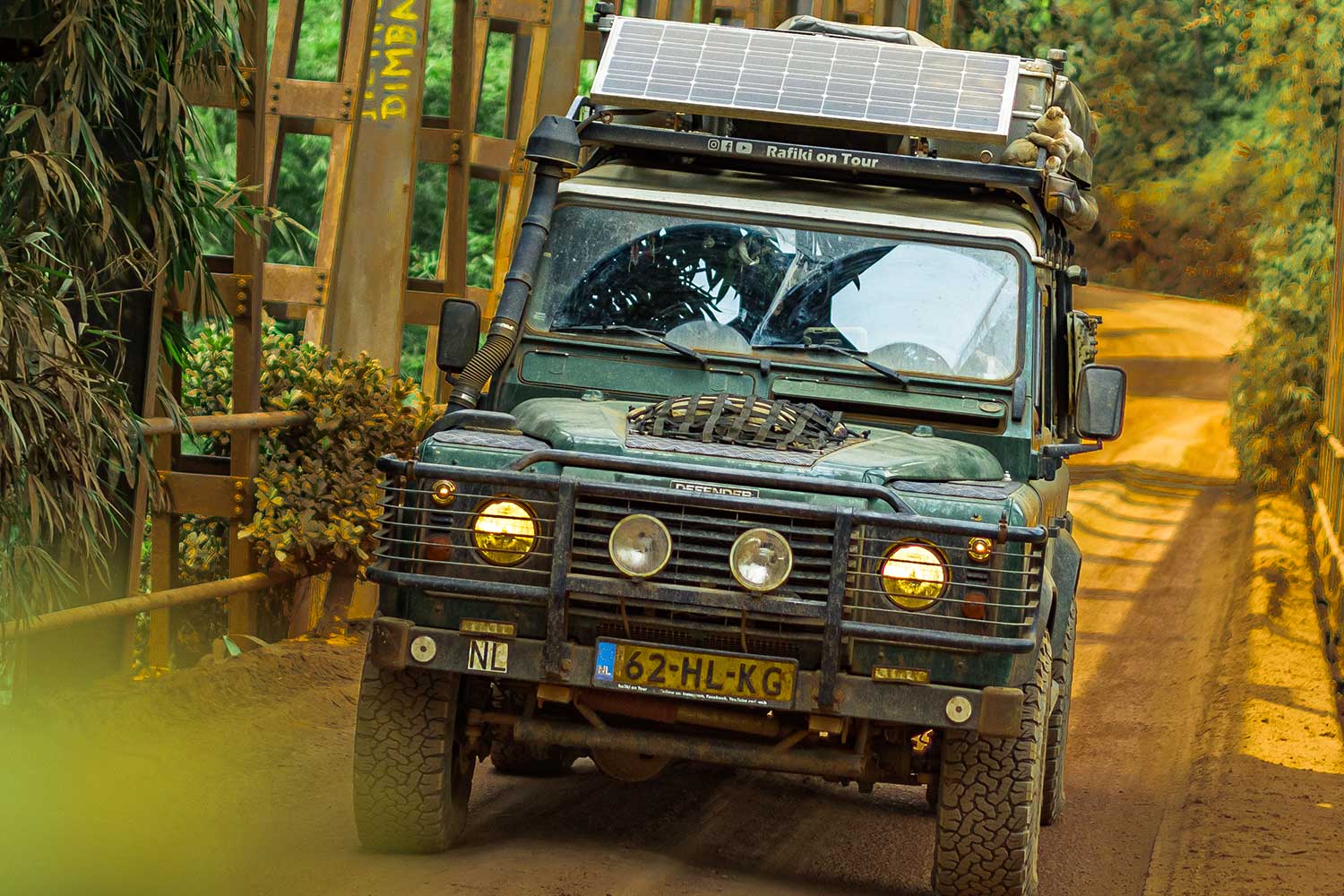Over many years, we have driven tens of thousands of kilometers, spent hundreds of nights in our rooftop tent, and taken thousands of dirt tracks. We have always chosen the remote locations, the places where we could dive deep into nature. We thrive when no one is around, in places where we have to rely solely on ourselves. From North to South, we accomplished to find adventure wherever we were. Now it’s time to inspire you to do the same.
Driving north
To fully understand why we were driving north towards Norway, some background information is necessary. It was back in 2017 when I, Tobias, wanted to explore Europe with Rafiki. I knew I was willing to quit my job, but I wasn’t sure if I wanted to travel alone. Skip a huge story, but I ended up traveling with (my now good buddy) Sven. During 8,5 months we traversed Southeastern Europe, from April to December. The trip was so exciting, that we were way slower than initially expected and had to skip the Scandinavian countries on our way back home. It was winter nonetheless, and with temperatures reaching -20 degrees Celsius, it was time to head home for Christmas.
Taking on the adventure in Northern Europe
Three years later, at the beginning of 2020, Sven and I were ready again, ready to tackle the unknown. This time, we planned to ship to South America and explore the continent to its fullest. Unfortunately, we all know what happened at the beginning of 2020. We waited out the storm for a few months, before making the final decision to take on Europe again, picking up where we left off three years prior. We left in the early summer of 2020 and started driving north. We had our ferry booked – from Denmark to Norway – and made our way to the tip of Denmark to hop on the boat. Over the weeks that followed Norway captured us. It provided all we were looking for. It offered mountain exploration, hikes, wild camping, and an ever-changing landscape. It didn’t take long before we decided to drive all the way north, all the way to the North Cape!
In the following weeks, we made our way north. After leaving the city of Trondheim behind in the South, the routes became clearer. There was one way up, and it would lead us directly to our destination, a mere 1600 km away. Whilst traveling north, we passed the Arctic Circle, took countless dips in the freezing rivers and even the ocean, and made a pitstop on the Vesteralen and Lofoten Islands, before pushing on. This road leading north is long. Very long. It isn’t about pristine beauty and diversity, but rather about accomplishing something greater. It is a challenging route for vehicle-based exploration, especially when one prefers wild camping and dirt tracks. Being late in the season made everything a little more challenging too. The weather was not in our favor as winds picked up, rain was a daily occurrence and even snow followed suit. Camping in an unheated rooftop tent wasn’t the most comfortable, but we persevered. Then, after four weeks of driving, we made it to our destination. We reached the top of the world, one of the most northern places reachable by road on the planet, the North Cape. What an experience!
Text continues below photo

Driving south on a new continent
After our North Cape milestone, we made our way south to the most southern point of continental Europe, Punta de Tarifa in Southern Spain. A few months later, with COVID still having the world in its grips, we returned home to regroup, rethink and prepare for future trips. During that time, Sven settled down in The Netherlands, whilst I started rebuilding Rafiki’s interior, preparing him for a new trip. I still had my sights on South America and did everything in my power to get Rafiki ready and find someone to join me. After a year back home I was ready to hit the road again. I decided to hold off on South America for now, quit my job, and do a third leg of Europe. It wasn’t until one month before I would leave, in May 2022, that Manon found me through Sven. We met up, made new plans, and left in July – not to South America as expected, but to Africa.
From deserts to jungles, towards the tip
We started driving South as soon as we could, and spent five weeks in Europe, before taking the ferry to Morocco. Here, the real adventure started. Neither of us had ever been in Africa, and the difference in culture was present and tangible. In the months that followed it became clear that this trip was going to be completely different than anything either of us had done before. It was incomparable to any of our past experiences. Our luck was that I knew Rafiki’s mechanics, and we both love a challenge, can adapt to new environments and cultures, and enter any situation with a smile. In all honesty, it was probably this mix that got us through. Traveling down the west coast of Africa is known to be one of the toughest and most challenging overland routes one can take. It is intense in any and every way. Cultures are different, bureaucracy is challenging, roads are sometimes non-existent and there is always something going on. Nonetheless, it is also one of the most rewarding routes you can take. The sceneries are amazing, adventure is pure and real and there is definitely something to be learned from the tightly knit communities of West Africa. This route south took us through deserts, jungles, grasslands, and endless rocky plains.
Over 16 months, we crossed the Tropic of Cancer in Western Sahara, the equator in Gabon – multiple times even due to the roads –, and finally the Tropic of Capricorn in Namibia. With that last milestone behind us, the most Southern Point was now just a mere 1500 km away. It was together with our Nigerian adoption puppy Nimba and friends Sanne and Neal, that we reached Cape Agulhas, Africa’s most southern point. It’s the place where the Indian and Atlantic Oceans meet, and for us, it has now become the place where we completed our Cape to Cape crossing of the planet.
Text continues below photo

Lessons learned
Achieving this milestone has taken us years. We can confidently say that these past few years shaped us, made us think bigger, and challenged us to push our limits. Looking back, it surely wasn’t easy. When considering the bigger picture, the challenges were real. From building an overland vehicle from scratch to finding the right balance with work, friends, and overland travel. Some tough choices had to be made, but they were worth it. Over the past months, traveling through Africa, our dreams grew even bigger. We shifted from a travel-work rhythm, on- and off-the-tracks, to a life fully revolving around overland travel. We are working hard to stay on the road, to explore more regions, and to capture the adventure.
Traveling like this is worth every bit of money, sweat and tears. It opened our world, provided new perspectives, and showed us the great diversity that this planet has to offer. We saw great wealth in Europe and found heartwarming people all over, but in general saw a more divided culture. Africa on the other hand, showed us the complete opposite. Here they make their lives work with the little they have, but proudly showcase their rich cultures and strong communal bonds. It showed us that this world is complex but beautiful.
During our travels, we also learned that every trip is different. The way you travel, your pace, and your interests all shape your expedition and make it your own. Also, the seasons turned out to have a much bigger impact than initially expected. Traveling long-term means you are most likely going to see a change in season, from summer to winter, from dry season to rainy season. It completely changes the way you perceive a region. These combined factors make your trip your adventure, with your memories that are worth sharing.
We also learned that extended travel can be challenging mentally and physically. Staying fit can be a real struggle, especially if the weather doesn’t permit physical outdoor activities. Besides that, being constantly on the move, with countless new impressions on a daily basis, can leave one burned out. It is important to find balance, even when traveling. Whilst the people back home think this might be a holiday, it surely is not. This is a lifestyle, one that is much more rewarding than living the predictable life back home, if you ask us. Nevertheless, it is important to not underestimate that that same predictability can keep you sane. For us, this meant finding a rhythm regardless of our day’s events, from having a breakfast ritual to winding down at the end of the day by watching a movie. Additionally, sleep and healthy food are prioritized. This, for us, all aids in a better mindset, and so enriches our experiences along the way.
For us, the Cape to Cape crossing was just the beginning. The world is too diverse and captivating to just stay at home. Go out there, dare to explore!





0 Comments